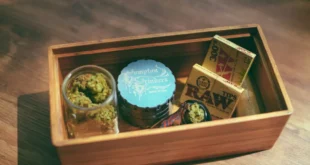Natsurikari (literally, “hand-made paper”) is a type of calligraphy that’s made by hand. It’s been around for centuries, and it’s gaining popularity once again thanks to the revival of traditional Japanese arts. For those of you who are unfamiliar with the process, artists make real natsurikari by carefully rolling ink onto paper using a bamboo or wooden stick. This technique results in a delicate and beautiful piece of art that you can use for everything from note cards to invitations. If you’re interested in trying it out yourself, here are some tips on how to get started. And if you want to learn more about the history and significance of this ancient art form, read on!
What is the History of Natsurikari?
Natsurikari is a Japanese art form that uses everyday objects to create beautiful and intricate pieces. The origins of Natsurikari are unknown, but historians believe that the art originated in the 17th century. Today, artists all over Japan still practice Natsurikari. There are many different styles of Natsurikari, and each artist has their own unique way of creating their pieces. You can use it to create paintings, pottery, and even jewelry. Some of the most famous artists in the world specialize in this art form, and galleries around the world often display their work.
The Process of Making Natsurikari
Natsurikari (南無リカ) is a Japanese style of lacquerware that uses a dark red, black, and green coloration. Artisans make it by applying a mixture of lacquer and water to bamboo strips, then heating the strips until they become flexible. They then carve the resulting pieces into various shapes and decorate them with gold or silver leaf.
Types
There are actually many types of natsurikari, some more popular than others.
Real natsurikari is a form of origami that has a single sheet of paper folded in half. The Fold is created by the intersection of two lines that have been drawn from opposite corners of the paper.
How to Prepare Natsurikari
Chefs prepare Natsurikari, a Japanese dish, using fermented soybeans known as natto. Cooks can make the dish with chicken or fish, and they can serve it as a side dish, appetizer, or main course.
There are several ways to prepare natsurikari. One way is to use chicken or fish that has been marinated in soy sauce, sake, and mirin. Another way is to simply mix together soybeans, water, and sake and cook them until they form a paste.
The final way to prepare is to ferment the soybeans using a variety of bacteria. This process produces an intestinal discomforting agent known as shigella which gives the dish its name – means “toilet food” in Japanese.
Serving Tips
Real natsurikari is made with a variety of seafood and vegetables cooked in a savory broth. Here are serving tips for the perfect real natsurikari experience:
1. Choose fresh seafood that is lively and fragrant.
2. Make sure the broth is flavorful and full of umami (savory) flavor.
3. Serve natsurikari over steamed rice or udon noodles to soak up the delicious broth.
4. Garnish with green onions, seaweed, and fresh shiso if desired.
Conclusion
If you’re ever in the market for a natural, sustainable flooring option, you’ll want to check out natsurikari. This type of flooring is made from the root of the kenaf tree, and it is known for its durability and resistance to water damage. Not only does this flooring look beautiful and add a touch of luxury to your home, but it also has many environmental benefits – making it a great choice if you’re looking to live eco-friendlyly.
Are you passionate about sharing your insights and expertise? We invite you to write for us! Whether you’re a seasoned writer or just starting out. We’re looking for fresh perspectives on a variety of topics, from lifestyle and wellness to technology and travel.
 Lifeyet News Lifeyet News
Lifeyet News Lifeyet News





